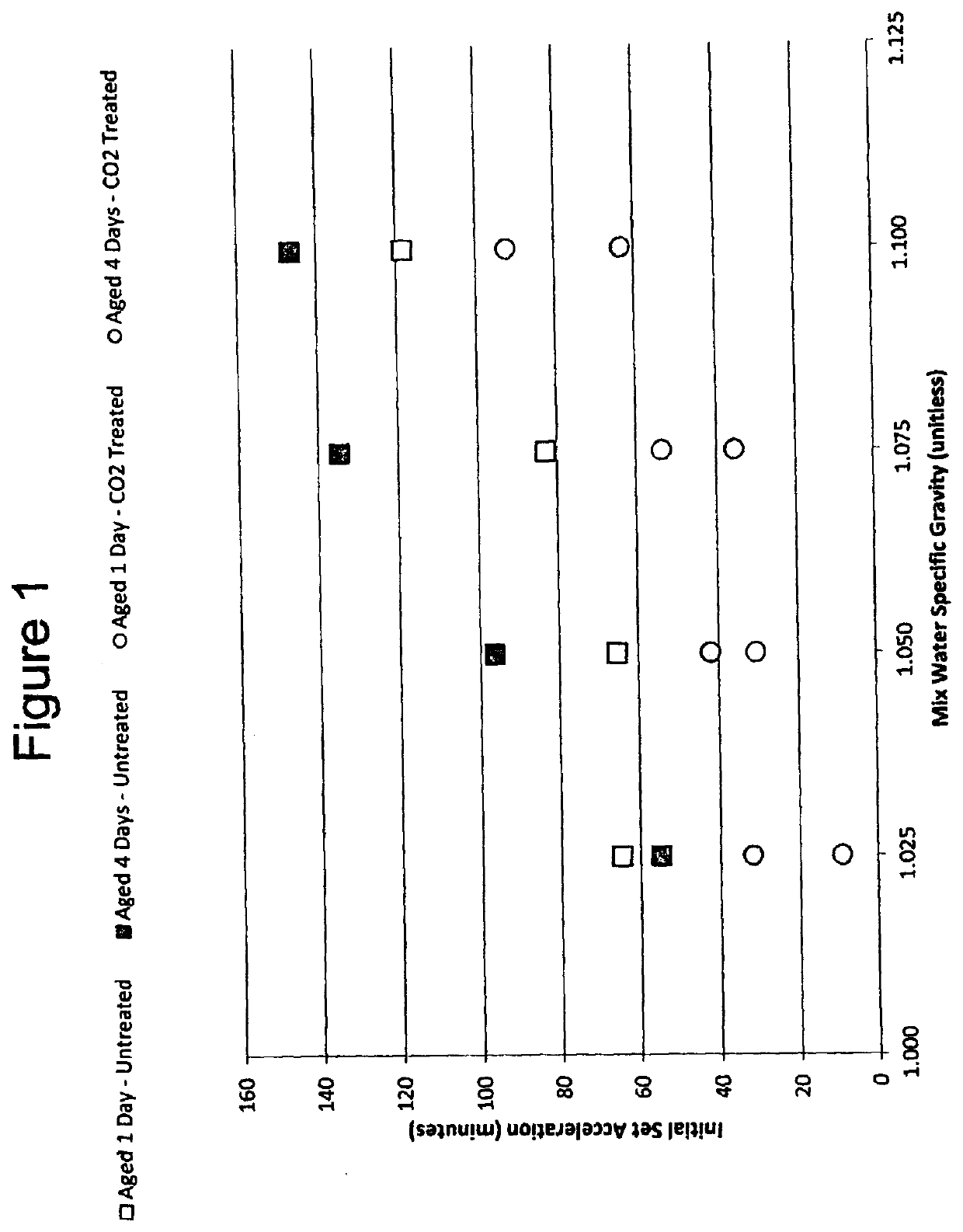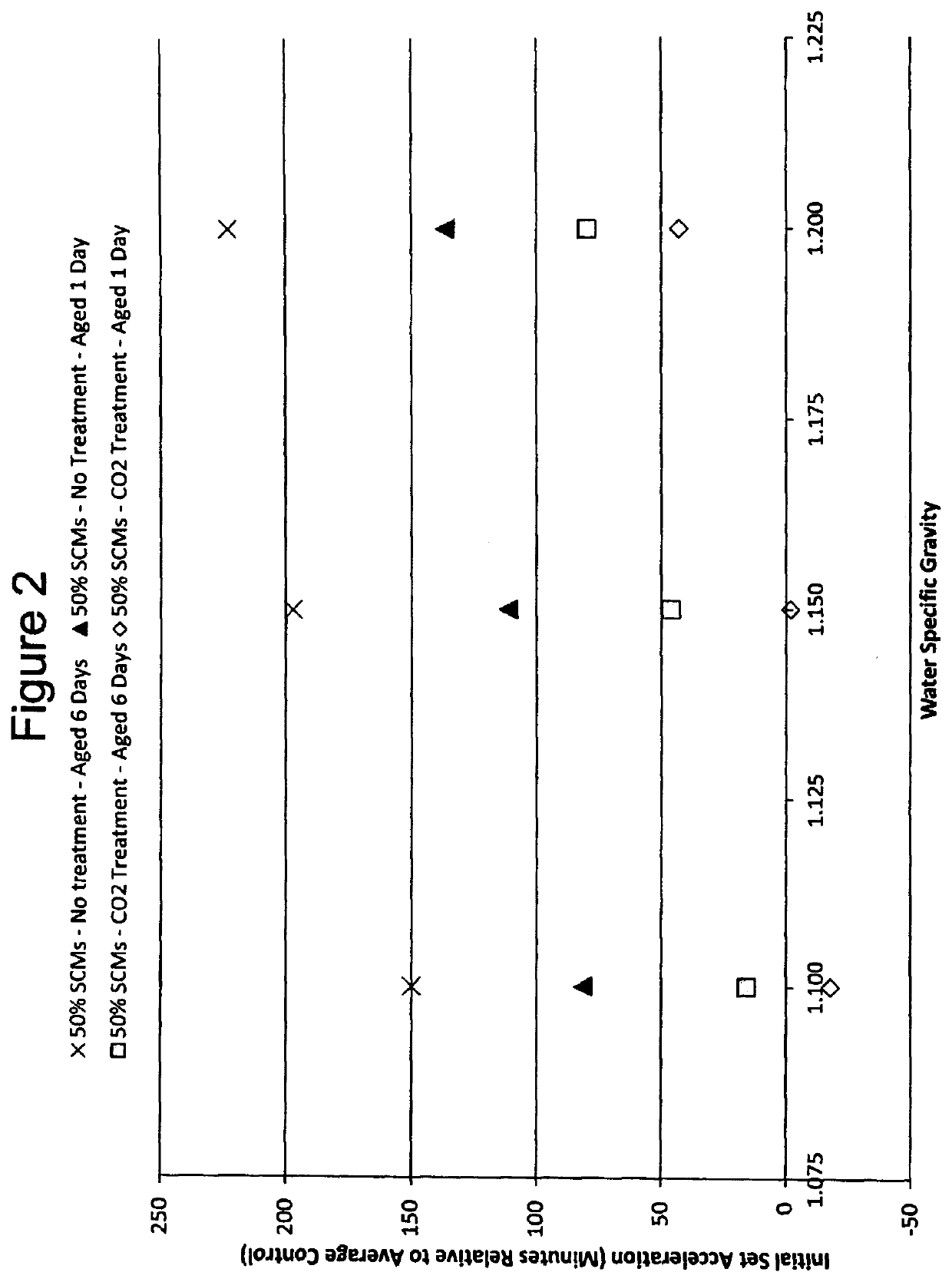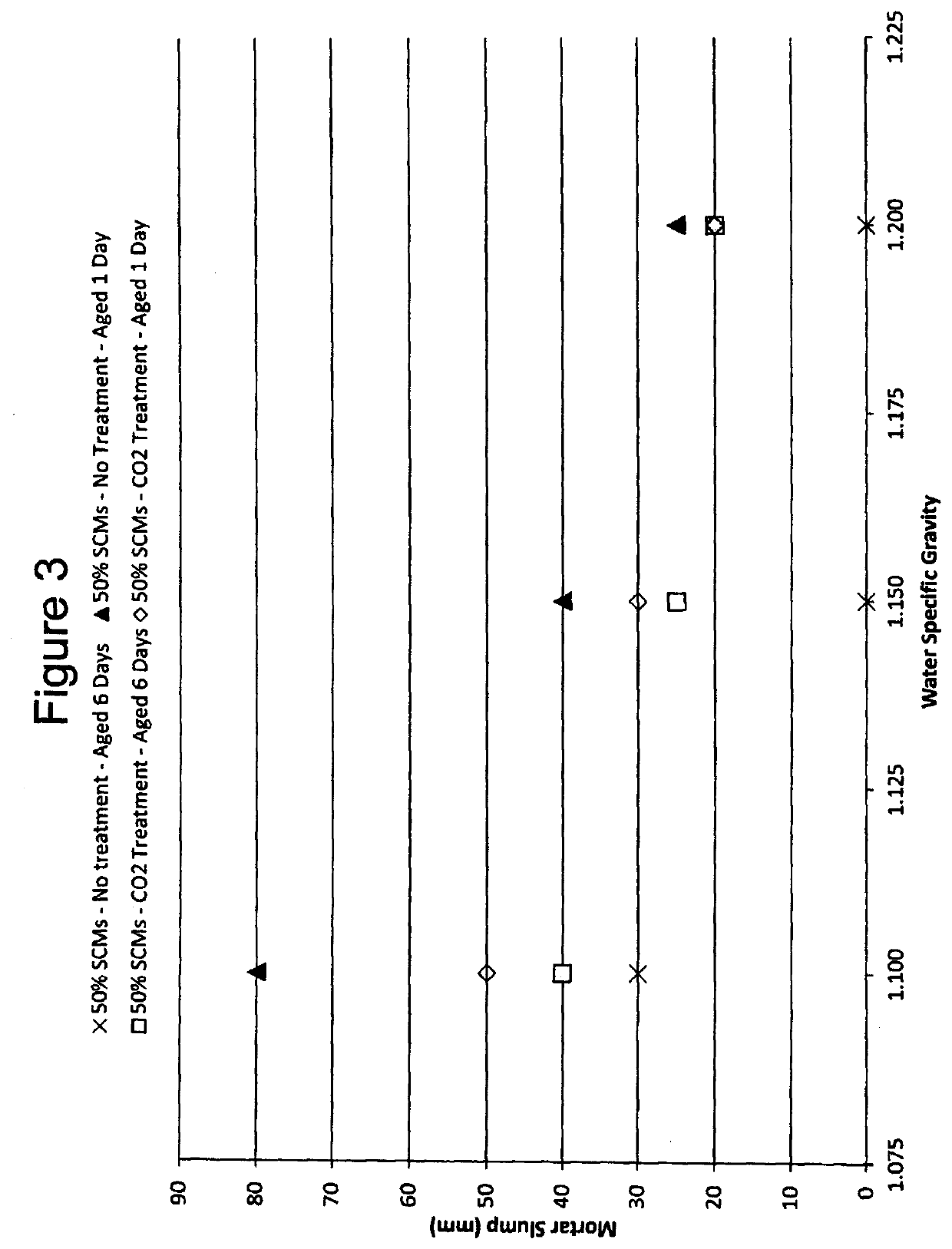Methods and compositions for treatment of concrete wash water
a technology of wash water and concrete, applied in the direction of water treatment parameter control, solid waste management, sustainable waste treatment, etc., can solve the problems of significant use and/or disposal of wash water produced in the making of concr
- Summary
- Abstract
- Description
- Claims
- Application Information
AI Technical Summary
Benefits of technology
Problems solved by technology
Method used
Image
Examples
example 1
[0346]Samples of grey (wash) water were prepared in the lab. Lab grey water was made by mixing cement with potable water. Specific gravity (SG) range of lab grey water was 1.025 to 1.100. Grey water was allowed to age for either 1 or 4 days before being used as mix water in the preparation of mortar samples. Set time of mortar was measured via penetrometer as per ASTM C403.
[0347]Set Time.
[0348]In FIG. 1, Acceleration is plotted relative to the set time for a sample made with potable water (SG=1.000). Both SG and age of grey water have large accelerating effect on mortar initial set.
[0349]A CO2 treatment was applied to grey water samples in same age and SG range as previous set. As with untreated samples, acceleration is plotted relative to the set time for a sample made with potable water (SG=1.000) (FIG. 1).
[0350]Treatment of the grey water with CO2 resulted in two main improvements: 1) Reduced acceleration: the amount of initial set acceleration was greatly reduced by the CO2 trea...
example 2
[0352]This Example demonstrates that treatment of concrete wash water (grey water) with carbon dioxide improves set, workability, and other characteristics of concrete made using the wash water, and allows the use of wash water at higher specific gravity than the typical maximum allowed.
[0353]In a first set of tests, samples of wash water were produced in the lab by adding known amounts of cementitious materials to potable water sources. The samples of wash water were allowed to age for up to 6 days before being used as mix water in the preparation of mortar samples. Certain samples were subjected to CO2 treatment, which included vigorous mixing and aging of the wash water under a CO2 atmosphere. Typically the exposure to CO2 was initiated in the timeframe of 30-120 minutes after preparation of the wash water and continued until the wash water was used for mortar preparation. Variations on the CO2 treatment were deployed wherein a sample of wash water was only exposed to CO2 once: e...
example 3
[0371]Binder powder was added to samples of water and allowed to age either 1 or 7 days. The binder powder for a given water sample matched the composition of the binder for the mortar later produced from the water; e.g., if the mortar were to be made with 100% OPC, binder powder for wash water was 100% OPC; if the mortar were to be made with 75 / 25 OPC / class F fly ash, a 75 / 25 OPC / class F fly ash was used. Water was either left untreated, or treated with CO2 consistently over the aging period. An excess of CO2 was supplied to allow thorough carbonation. Following aging of the mix water mortar samples were prepared according to the following recipe: 1350 g EN Sand, 535 g cement. Set time was measured from calorimetry as the thermal indicator of set (the hydration time to reach a thermal power of 50% of the maximum value of the main hydration peak, ASTM C1679).
[0372]The results are shown in FIGS. 15-18 and TABLE 2. 15 different batches were aggregated for each condition, and results a...
PUM
 Login to View More
Login to View More Abstract
Description
Claims
Application Information
 Login to View More
Login to View More - R&D
- Intellectual Property
- Life Sciences
- Materials
- Tech Scout
- Unparalleled Data Quality
- Higher Quality Content
- 60% Fewer Hallucinations
Browse by: Latest US Patents, China's latest patents, Technical Efficacy Thesaurus, Application Domain, Technology Topic, Popular Technical Reports.
© 2025 PatSnap. All rights reserved.Legal|Privacy policy|Modern Slavery Act Transparency Statement|Sitemap|About US| Contact US: help@patsnap.com



